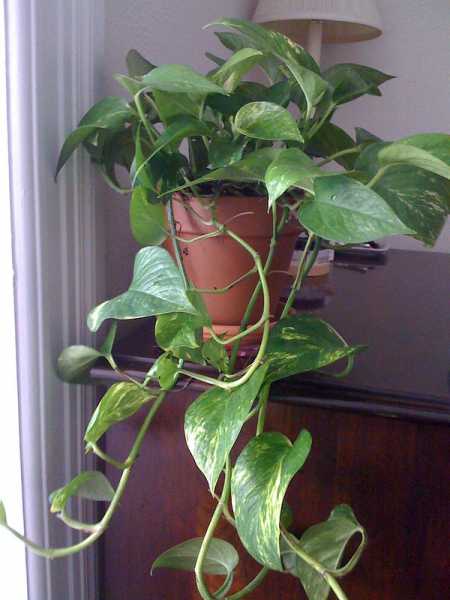Pothos is one of the most common houseplants that are famous for the ease it provides to its caretaker while growing. However, nothing comes without a price.
It really doesn’t matter if your pothos is forgiving or not, because once you start distressing it, it would give up one day and decide to terminate its life.
Perhaps, this is why you are here, to ask “how to revive a dying pothos plant.” You are at the right place! In the preceding article, you will be informed about the signs that tell you if the pothos is dying or not, along with tips to revive your pothos plant.
How to Tell if Pothos is Dying?

A dying pothos will give you numerous signals before it finally takes off. All you have to do is, catch those signs rightfully and begin doing the needful. Let us have a look at the most common symptoms of a dying money plant:
- The very first is dropping or limp leaves. When the leaves start to droop down, it is a red flag.
- White spots on your pothos plant leaves indicate the presence of fungal diseases, which have the capacity to end your plant.
- Water stress, low light, and over-fertilization can result in a dramatic yellowing of leaves, which is fatal for many pothos, if not treated timely.
- Brown leaves indicate low humidity in the environment, and the plants cannot tolerate that, resulting in their death.
- Pests and overwatering can get the leaves of your pothos plant to curl, something that is harmful to the health of your plant.
Also Read: How Long Can a Peace Lily Go Without Water?
Reasons of dying pothos plant
A lot of signs that we saw above stems from reasons that are mutual between these symptoms. Understanding the logic can not only help us prevent further damage, but would also straitjacket us from performing such activities in the future.
Overwatering
If we are to list the reasons for pothos dying, overwatering should undoubtedly top the list. Here’s why-
Excess water in the pothos plant tends to turn the leaves brown while also causing root rot. Next, if you want to evaporate the water, you would expose it to light which can promote the drooping of leaves.
That is how this deadly loop is created.
Underwatering
You might think, okay, if not overwatering, then maybe underwatering can do the trick. Well, well, this is not how it works.
If you are devoid of your pothos plant of adequate water and moisture supply, you are taking the most critical source of nutrition away from your plant. The plant does not tolerate this for long, and it dies.
Also Read: Overwatered Peace Lily: Signs & How to Revive Peace Lily
Lighting issues
Pothos can grow without light, but they cannot thrive without it. If you alienate your plant from sunlight or any other source of light for a considerably huge amount of time, then it would reflect in their stunted growth, lack of food and nutrition, and leggy growth.
These reasons provide enough impetus for a pothos plant to die.
Improper Drainage
This problem is very well linked to our very first issue of overwatering. If you allow the plant to sit in excess water for more significant periods of time, then it would create no space for aeration and a foul odor.
It can result in root rot, wet and soggy soil, and finally, the death of your plants.
What else?
These reasons are not the only ones that can contribute to fatal conditions for your plant. Following unhealthy habits like over-fertilizing the plants, not treating fungal infections and pests timely, providing an improper potting mixture, and lack of maintenance are also famous for encouraging the ill health of your pothos plant.
Check this out: Do Marigolds Keep Snakes Away?
How to revive a devil’s ivy?
We know you might be overwhelmed to look at all those dangerous reasons and signs that indicate that your pothos plant is dying, but what if we gave you perfect solutions for your problems? That’s right. Look at these big five solutions to revive your devil’s ivy houseplant.
Without further ado, let us begin!
Correcting the watering techniques
We saw how both overwatering and underwatering could be a problem for your pothos plant. So, how to know the correct watering technique and amount. You can solve the problems of underwatering and overwatering independently.
If your plant is overwatered, prune the damaged leaves, and stop watering for a few days, or at least until the soil becomes arid and dry again. You can also prevent overwatering by watering only when the soil seems dry and drain out the excess water immediately.
Further, if you want to correct the problem of underwatering, remove all the damaged leaves carefully, and start by watering your plant until it regains its lost moisture content. Follow this by misting the plant and by incorporating the bottom watering method.
Fixing the lighting issue
Pothos loves to thrive in plenty of indirect bright light, but it also despises too much sunlight. What to do? You can begin by simply stressing your plant with abundant, direct sunlight. Next, you need to find a spot that offers the ideal amount of sunlight for your plant. Relocate the pot at that position.
Do not let the plant receive more than 3 hours of sunlight. It is dangerous. Take care that your plants are precisely placed indoors only.
Checking for root rot
Mushy roots usually indicate that nothing more can be done to prevent your plant from dying, so you need to follow these steps carefully since the life of your plants depends on them, quite literally.
Start by pruning the damaged leaves, if any. Take the plant out carefully and check the roots. Carefully get the plant rid of the existing soil and root ball. Identify feeder roots, and take special care in not destroying them.
Place the roots underneath running water and dry them in fresh air for 24 hours. Choose a pot of appropriate dimensions and size, lay the bed with nourishing and healthy soil, and repot your plant.
Preventing pest infection
Insect infestation can be challenging to treat if you do not have the proper measures to treat them. Identify the puckered leaves and chop them off nicely. Dilute some neem oil with water and spray the solution on leaves.
Continue spraying the solution weeks after the infestation is tackled and gotten rid of. You can dab a cotton ball absorbed with isopropyl alcohol and rub the leaves with the solution for instant relief.
Adjusting the temperature and humidity
Choose the right temperature and humidity conditions for your pothos plant to grow. Note that in order for the pothos plant to survive, both temperature and humidity are required to be ideal and constant.
Cut the affected leaves, and maintain a temperature range of about 30 to 55 degrees Fahrenheit. Finally, keep the humidity conditions above 60% at all times. If needed, remove the dehumidifier from the surroundings of your pothos plant.
Conclusion
Once you diagnose your plant for the right symptoms of death, you might feel that there is nothing you can do to save it.
But, as we saw above, this might not always be the case. As soon as you identify your plant dying, administer the required steps with the utmost care, groom your plant, and nothing can stop you from reviving your devil’s ivy.
